How To Break A Food Trance
HOW TO BREAK A FOOD TRANCE (Issue 7)
by Sharon Livingston and Glenn Livingston
G: Hey, Sharico.
S: Hi, Sweetheart.
G: How are you, today?
S: I’m good. I was looking at the letters that we get. And we get like tons of letters every day. And I try to peruse them quickly to see what the themes are where people are just commenting. They’re not asking for response. They’re just talking about what’s going on with them. And a very typical theme is I’M OUT OF CONTROL. I can’t stop myself. I don’t know why I do it. I just put the stuff in my mouth.
Sometimes, they’re very cruel to themselves the way they describe it. I’ve been thinking about it a lot and trying to think about how to help people with it. And what I’ve come to recognize is that that kind of eating is like being in a bad trance.
G: In a negative trance.
S: It’s a negative trance. Do you know what I mean by that?
G: I do.
S: So, talk about it from the way you experience it.
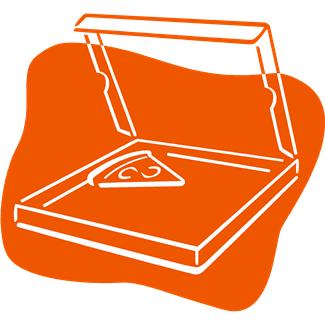 G: I have bought myself a pizza. And thought that I’m gonna have four slices. And I taste the first couple of bites. And then I go into a kind of an automaton routine. And then I look down, and almost all four of them are gone. And I don’t remember having slice number two, slice number three, or even the bites in between there. I don’t remember the experience. I’m very angry at myself for doing that. And because I wasn’t really there, I’m still hungry. And, so it keeps going.
G: I have bought myself a pizza. And thought that I’m gonna have four slices. And I taste the first couple of bites. And then I go into a kind of an automaton routine. And then I look down, and almost all four of them are gone. And I don’t remember having slice number two, slice number three, or even the bites in between there. I don’t remember the experience. I’m very angry at myself for doing that. And because I wasn’t really there, I’m still hungry. And, so it keeps going.
S: You’re still wanting.
G: Right, not physically hungry, but still…
S: Feeling like you missed something.
G: Exactly. Like the aliens came and took Glenn away and just put on this food machine.
 S: Yeah, we were talking about it as though it only happens with food that’s not so great for you. But, it could happen with a salad, too. Right?
S: Yeah, we were talking about it as though it only happens with food that’s not so great for you. But, it could happen with a salad, too. Right?
G: Ya.
S: Like, I put the salad down, and I got involved in doing something like working on the computer or watching something on TV or getting in a conversation with someone. I felt like I needed another bite, and I looked down at my plate. It’s all gone. Like, where did it go?
And that’s one of the elements of trance. From the way were taught about hypnosis in school. There’s a sense of timelessness. Like time had stopped, and we don’t know how much time went by. Did you eat it in 5 minutes, did you eat it in 10 minutes. Did you eat it in 1 minute? I bet you couldn’t tell. And that’s one of the signs of being in a trance. There’s no sense of time.
G: Absolutely, true.
S: And also, because you were in this trance, instead of being there, you didn’t taste it. You didn’t feel the texture; you didn’t smell it; you didn’t experience yourself swallowing it. All of that has disappeared. It was as if you hadn’t eaten it. And you still are wanting.
G: It’s a horrendous thing because I’m still wanting, but I know that I shouldn’t have, and I’m feeling somewhat bloated. And feeling like I shouldn’t be wanting. And you just don’t know what to do. And, because that’s a painful realization, the easiest thing is to go right back into the trance.
S: Exactly. And, so then, more ends up on your plate, and it all disappears, and you repeat the process, trying to get the experience and never really having it.
G: So, what’s the solution?
S: Well, it’s a very simple one, actually. It’s to, at least, for when you are starting that particular food experience, is to be totally present.
I see you do it a lot, actually, where you’ll say,
“Honey, do you want to come and sit at the table while we have this food?”
Because I’m very often quite willing to go and eat at the computer or eat in front of the TV. I know we both do that, but if I really want to savor my food and experience it, I’ll have a much better experience of satisfaction of having eaten it if I sit at the table, and I take a bite, I smell it, I kind of roll it around in my mouth a little bit, so I can savor the flavor. I can get the texture, and maybe even just pause for a second with it in my mouth before I start to chew it so I can get the full experience of the food.
 G: What do you think this has to do with our early table experiences? Eating at the table in my house was not very comfortable. It’s something that I learned that it’s really helpful to do as an adult and, actually, not all that long ago.
G: What do you think this has to do with our early table experiences? Eating at the table in my house was not very comfortable. It’s something that I learned that it’s really helpful to do as an adult and, actually, not all that long ago.
As a kid, there was a lot of competition at the table. I didn’t always get along so well with my dad and my mom and my sister. The food wasn’t always so good. So I tended to have more peace all by myself. Yet, even if I am all by myself, my eating is much healthier when I take the time and sit at the table.
S: What happens is people aren’t paying attention to the food. They’re paying attention to everything else but the food.
I want to go over the anti-trance, mindful kind of eating experience…
G: Uh-huh.
S: Where you’re really paying attention to it. Recently, we hear a lot about mindful eating, and you’ll hear people talking about that. It’s something that’s been around for a very, very long time. And I remember going to a workshop when I was an older teenager where we were taught how to eat an orange. And really savor it. And it was the best orange I ever ate in my whole life. And so I’m gonna talk about that more in a moment. I’m also wanting to come back to what you’re saying ‘cause it’s a different thing about early eating experiences, and, you know, I’m one of five kids, and my grandmother lived with us, and we had a lot of people around me at the dinner table.
G: So, you took the time to pay attention to your food, it would have been gone from your plate ‘cause someone else would have taken it, in my house.
S: Right. Your dad would have eaten it. I had to compete with my brothers. To this day, I’m a fast eater. Right?
G: Very fast. Ya.
S: It’s easier to have digestive problems if you’re gulping down your food.
G: Right.
S: If you take your time, which I rarely do, I have to really, really, really talk myself into doing that, if I take my time, I’m more likely to digest it properly and have less of a chance of putting bubbles in my tummy or making myself uncomfortable.
G: How do you do that? Do you have a specific set of instructions to help us to do that?
S: Yeah. Going back to that orange exercise, I think everybody should do this. Do it with an orange. Do it with an apple.
G: Something that you have no ambivalence whatsoever about eating. You know it’s healthy for you and it’s totally on your plan.
 S: An orange is a particularly wonderful thing to do or like a tangerine. Something that’s easy to peel. The first thing to do is to take a look at it. You want to experience this food with all your five senses. You’re going to take some time, maybe 20 minutes, to fully experience this orange, or an apple, whatever it is.
S: An orange is a particularly wonderful thing to do or like a tangerine. Something that’s easy to peel. The first thing to do is to take a look at it. You want to experience this food with all your five senses. You’re going to take some time, maybe 20 minutes, to fully experience this orange, or an apple, whatever it is.
What you’re doing here is tuning your brain to pay attention to what you’re doing. So, when you have that orange and the first thing you do is you start to peel it. Isn’t this the most incredible thing anyway? Like, whenever I’m in the kitchen and you decide you’re gonna to have an orange, and you start to peel the orange. Like, I want some. It just smells so good. So the very first thing is when you start to peel it. You know, you feel the little bit of spray that pops out from the peel. You feel it on your fingers. You bring it to your face. You’ll smell it very intensely, and that starts you appreciating the orange or the tangerine or whatever.
And then taking your time to peel it and take a wedge of it, and smell it, take a little bite, and just experience it in your mouth, fully, what’s the temperature of it, what’s the texture of it, what’s the taste of it, even before you start to bite and chew and then take your time chewing a section before you swallow it to make sure that you’ve gotten it to the right texture – what that feels like, and then fully feel the swallowing before you start with the next bite.
So take your time to go through as much of this orange or tangerine as you want to eat. Smell it, feel the texture, experience the sensation of it, how it is to chew it, how it is to swallow it, with every bite, the sweetness, the tartness. It’s gonna be a totally different orange than you’re used to eating because most of us take a couple of bites and just kind of swallow it without having chewed it very much. And then, you’ve inhaled this orange only having experienced a tiny bit of it.
G: That’s why I would imagine that if you do this a few times, that that experience starts to translate to what you are eating throughout the day without consciously doing that exercise.
S: But you can consciously do that exercise with every single thing you’re eating. And I don’t mean that you’re gonna spend 20 minutes with every thing. But, if you could slow yourself down enough to truly experience and taste the first bite, that kind of sets the tone for being mindful about eating it. I mean, you’re not gonna take the full 20 minutes for every food on your plate, but, you will be slowing yourself down, and you will be appreciating or not appreciating – you might find there are certain things you like more than others, and why am I even bothering eating this. Unless there is some real major reason why you have to, you really don’t have to.
The other thing is to pay attention to where you are when you are eating it.
And, if you’re forced into a situation where you have to be at your desk and eat, to take 10 minutes, that’s just 10 minutes, for whatever food you have in front of you. That’s the hardest thing to do is to slow ourselves down enough to pay attention to what we’re doing.
I know that even though most weight loss, and dietitian and nutritionist experts, would say the best thing is to eat at a table, totally dedicated. For you, that was a painful experience. Having dinner in front of the TV is very soothing sometimes because the TV is keeping you company.
Important is, still, to taste your food. It’s important to take one bite at a time. There are times when I’ve stuck things into my mouth because I want to get it down ‘cause I think I have to do something. That’s one of those times when the food really has disappeared. Like I’m trying to get it out of my hand so I can do something with that hand. And then I go to have another bite of it, and it’s gone.
I hate that. There are some other things you can do to slow yourself down. You always ask me, “Why do you get the chopsticks,” in the Chinese restaurant? ‘Cause it slows me down. That’s why I do that.
G: Interesting.
S: Another thing some people do is they eat with your non-dominant hand. So, if you’re right-handed, eat with your left hand. That will naturally slow you down.
G: That’s interesting.
S: If possible, try to avoid doing other things. Or, even if you’re in a conversation with other people, make sure that, in between talking with them, you’re actually looking at your food and bringing it to your mouth in a mindful kind of way like knowing that you’re doing it. I know that when I eat standing up, I’ve inhaled it. I have a better chance of slowing myself down if I’m sitting down.
So those are a few things. The other thing about that, and we all know this, if you eat something in under 20 minutes, your body doesn’t know that you ate it. It takes 20 minutes for you to register that you actually had the food. So, if you can take your time, and slow yourself down, put your fork down in between bites. Now if you’re eating an ice cream cone or handfuls of food, like snacks, you don’t have a fork to put down. But to make some space and pause between bites.
Anything that can serve as a pause breaks the trance.
G: Gotcha. Did you want to say anything else about the early table memories and how that influences people’s ability to eat mindfully and avoid going into the food trance?
S: I wasn’t thinking about it so much as a trance. It was an important consideration about what we learn when we are kids.
G: As you do this, you’ll probably have memories about what your table experience was.
S: Like we just did now.
G: Which is very interesting for you to look into.
S: Yeah. I hadn’t thought about it, that, wow, I better get that food down quickly or there won’t be any to have. To have three big brothers who were much bigger and, you know, much hungrier and all that testosterone and they were like a pack of moose who constantly had to eat, feed themselves. And there wasn’t much room for a little girl. And then, of course, there was my grandmother who was just like this human eating machine. If it was on your plate and she thought you weren’t gonna eat it, it disappeared. So you had to eat it quickly; otherwise, it was gonna disappear.
G: Well, OK, sweetheart. The summary here is what?
S: Break the trance.
The other thing is that when you come out of that trance and you realize all that stuff is gone, like maybe the whole bag of potato chips is gone, or the whole bowl of popcorn is gone, or the whole bowl of cookies is gone. People coming out of a negative trance feel horrible. You know, when you’ve had a good hypnosis experience, you come out of it feeling refreshed and vibrant and awake.
G: But if you wake up from a one-night-stand, you feel like you don’t really respect yourself for what you did.
S: Exactly. And that’s how it feels when you’ve had a bad eating experience that you …
G: That you’ve compromised your value. When that happens, what you should do is …
S: Dedicate yourself to paying attention. All it is is a matter of paying attention. It doesn’t matter what you’re eating. Pay attention to it, and slow yourself down.
G: So you can always use the present moment to be healthy, and the way to do that is just pay attention. No matter what you had before. No matter how full you feel. No matter how long the trance was.
Thank you, Sweetheart.
S: That was great.
G: Yeah.
S: Thanks for listening. Now, to gain more confidence in your ability to enjoy guilt-free, stress-free eating with delicious food, please visit http://emotionaleatingrelief.com. Got it? That’s http://emotionaleatingrelief.com. Thanks.
AUDIO VERSION
How-To-Break-A-Food-Trance.mp3
SHARON LIVINGSTON, PHD
Sharon (S, in the transcript, above) holds a PhD in humanistic psychology from Kennedy Western University. She has interviewed over 5,000 people about emotional eating. In addition to her private coaching, she has done psychological research for companies like Weight Watchers, Atkins, Kraft and more and has published articles in The New York Times, The Washington Post, The American Bar Association Journal and many others. She is available, as above, at http://emotionaleatingrelief.com.
GLENN LIVINGSTON, PHD
Glenn (G, in the transcript, above) holds his PhD in clinical psychology from Yeshiva University. He has previously practiced as a marital and family counselor, seeing approximately 1,000 patients in nine years. He also consulted for many major corporations in emotional eating pertaining to advertising. You can reach Glenn through the same link as above.
——————————————————————————–
FEEDBACK
We, at Warriors Of Weight, welcome your comments on this week’s issue interview. You can reply by email to 1 [at] warriorsofweight [dot] com, or feel free to leave comments after the article below.
Click here to subscribe to this newsletter.
Copyright © [2011] by [WarriorsOfWeight.com] – All Rights Reserved.

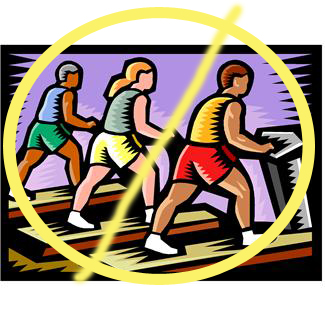 The obvious secret weapon that meditation offers is that it doesn’t require working out or body motion, often dreaded when we want or need to lose weight because we feel too uncomfortable to move or we’re dismal. There’s no big effort to get it started. The only thing moving is internal, it only takes a minute and it makes you feel good.
The obvious secret weapon that meditation offers is that it doesn’t require working out or body motion, often dreaded when we want or need to lose weight because we feel too uncomfortable to move or we’re dismal. There’s no big effort to get it started. The only thing moving is internal, it only takes a minute and it makes you feel good. Imagine if every time we felt stress of some sort, we could do half a minute of meditation, and the stress would go away. Our emotional eating would reduce once we learned that a tiny taste of the meditative mind could give us a different perspective which could help reduce food cravings.
Imagine if every time we felt stress of some sort, we could do half a minute of meditation, and the stress would go away. Our emotional eating would reduce once we learned that a tiny taste of the meditative mind could give us a different perspective which could help reduce food cravings.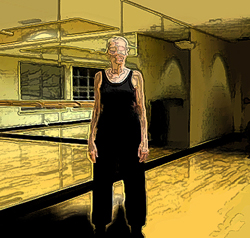 1) Stand with feet shoulder width apart.
1) Stand with feet shoulder width apart.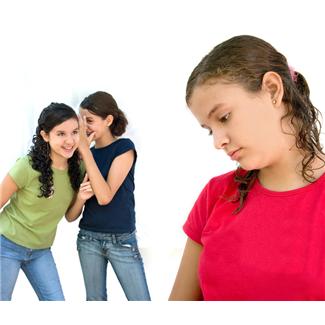

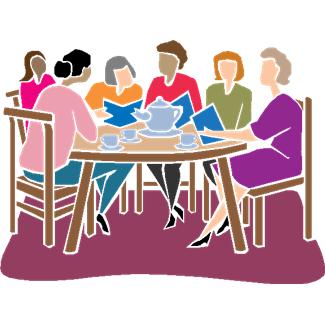 MOMS = EXPERTS
MOMS = EXPERTS COACHES AS PROFESSORS
COACHES AS PROFESSORS Having our moms invade our territory is akin to how our daughters feel about us, at times or all the time. I remember the territoriality reversed, one day, when I tried to give my mom driving directions from her suburban home to a New York City location near my New York City apartment. (Of course, she had been nearby hundreds of times, but I knew exactly where she was going and knew current construction and thought I would offer help.) The instructions were refused, politely, because my mom was protecting the domain of expertise her husband had. She felt challenged on his behalf such that her acceptance of my help might minimize his expertise and, in turning down the directions, said something that paraphrased like, “Oh, let’s leave it to your stepfather; he’s an expert at that.” I understand completely because he was one of her heroes and they held each other on mutual pedestals.
Having our moms invade our territory is akin to how our daughters feel about us, at times or all the time. I remember the territoriality reversed, one day, when I tried to give my mom driving directions from her suburban home to a New York City location near my New York City apartment. (Of course, she had been nearby hundreds of times, but I knew exactly where she was going and knew current construction and thought I would offer help.) The instructions were refused, politely, because my mom was protecting the domain of expertise her husband had. She felt challenged on his behalf such that her acceptance of my help might minimize his expertise and, in turning down the directions, said something that paraphrased like, “Oh, let’s leave it to your stepfather; he’s an expert at that.” I understand completely because he was one of her heroes and they held each other on mutual pedestals.
 1) Watch Our Language: Yes, this one is painfully obvious, but not always as easy as we think. Be careful about the nicknames. It may seem silly, but I can tell you it is brought up over and over again in therapy sessions. Save yourself the money and choose a name that is healthy and appropriate!Try to curb your appearance-related comments. I know this is not going to eliminate every comment regarding appearance and there may even be times when a, “Wow! You look amazing!” is totally appropriate (shall we say prom night?), but on the whole, ensure that your focus is on your child’s character and accomplishments. Try this on for size, “You must feel great about [accomplishment, ex.: getting that award]. That shows real [character trait, ex.: courage].” After all, isn’t that what we really care about?
1) Watch Our Language: Yes, this one is painfully obvious, but not always as easy as we think. Be careful about the nicknames. It may seem silly, but I can tell you it is brought up over and over again in therapy sessions. Save yourself the money and choose a name that is healthy and appropriate!Try to curb your appearance-related comments. I know this is not going to eliminate every comment regarding appearance and there may even be times when a, “Wow! You look amazing!” is totally appropriate (shall we say prom night?), but on the whole, ensure that your focus is on your child’s character and accomplishments. Try this on for size, “You must feel great about [accomplishment, ex.: getting that award]. That shows real [character trait, ex.: courage].” After all, isn’t that what we really care about?
 The good news about this story is two-fold: we can figure out what we want, how valuable it is to us and what we are willing to give up to achieve it and the wish collector who leads us to contemplate our objective is within us. It is we who get to decide on our most precious goal, although we might want to keep it small enough so that we can succeed at it small increments at a time.
The good news about this story is two-fold: we can figure out what we want, how valuable it is to us and what we are willing to give up to achieve it and the wish collector who leads us to contemplate our objective is within us. It is we who get to decide on our most precious goal, although we might want to keep it small enough so that we can succeed at it small increments at a time. order to reach our ONE WISH, which is the path we choose for right now, we must consider what is most important to us. There is no rush, so we need proceed at our own pace. As long as we don’t procrastinate or consistently stray away from a decision through distraction. Writing down ideas helps a lot. Every time we cross one off or delete an idea, we are one step closer to having that one wish present in our mind. Once we have “it,” we can take a tiny sliver of an action that will take us a centimeter closer to achieving “it.” Big steps are OK, but we must be polished swimmers to jump into deep ocean. Most of us can do massively well by first stepping off the sandbar and proceeding slowly. Please be patient as I outline steps for finding the right wish for you now. They may seem easy and obvious, but going through the exercise of writing them down and proceeding one at a time builds momentum and keeps us directed.
order to reach our ONE WISH, which is the path we choose for right now, we must consider what is most important to us. There is no rush, so we need proceed at our own pace. As long as we don’t procrastinate or consistently stray away from a decision through distraction. Writing down ideas helps a lot. Every time we cross one off or delete an idea, we are one step closer to having that one wish present in our mind. Once we have “it,” we can take a tiny sliver of an action that will take us a centimeter closer to achieving “it.” Big steps are OK, but we must be polished swimmers to jump into deep ocean. Most of us can do massively well by first stepping off the sandbar and proceeding slowly. Please be patient as I outline steps for finding the right wish for you now. They may seem easy and obvious, but going through the exercise of writing them down and proceeding one at a time builds momentum and keeps us directed.
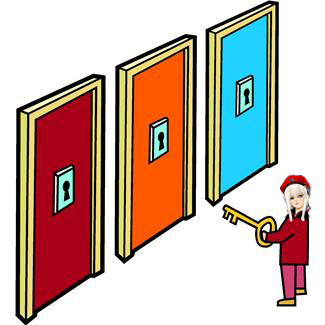

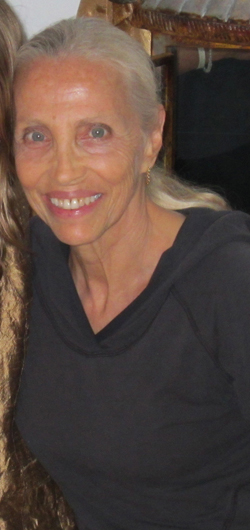 AT PEACE WITH DIANE GOLD, WHERE DIANE GOLD INTERVIEWS
AT PEACE WITH DIANE GOLD, WHERE DIANE GOLD INTERVIEWS 






